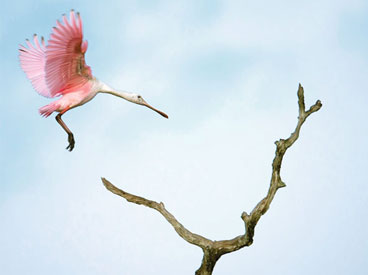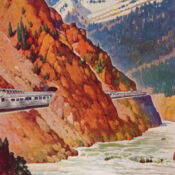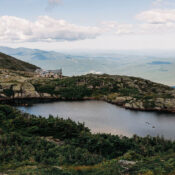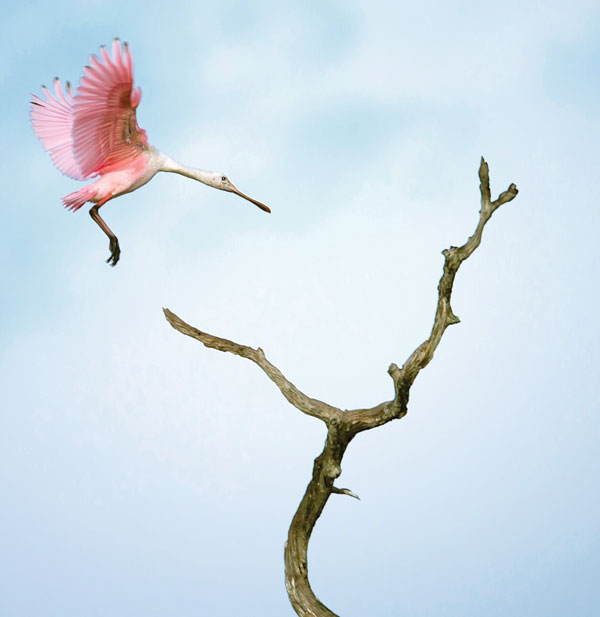
Photo courtesy Floridastock/Shutterstock.
America loves its birds. We spend a fortune on them—$4 billion a year just to feed wild ones and another $1 billion annually on feeders, birdbaths, and birdhouses. All told, 46.7 million Americans consider themselves birders, according to the most recent U.S. Fish and Wildlife Service survey. As astoundingly large as this number is, the activity continues to surge, growing faster than mountain biking or skiing. Bird watchers, ahem, birders (the preferred modern term) have their pick of well over 200 festivals devoted to birds each year.
[Want to test your bird knowledge? See how many bird calls you recognize in this audio quiz.]
What exactly is it about our winged friends that makes them so appealing? Well, they’re pretty, for one. “Everybody loves birds,” ornithologist John Fitzpatrick tells me. He’s director of the Cornell Lab of Ornithology, popularly known as the Bird Lab, which is ground zero for most things avian in North America. “You don’t need to know a thing about them to enjoy them. They enjoyed birds in the days of the ancient Egyptians and in caveman days.”
Fitzpatrick goes deeper than your average backyard enthusiast. He’s helped discover seven species of birds in South America and is a central player in the ongoing controversy over whether the ivory-billed woodpecker, long believed extinct, has been rediscovered in Arkansas. But he gets the purely visceral appeal of birding: “Birds are colorful. They sing and fly and migrate so they join us in different parts of the world. They move enough annually so they mean seasonally different things for us.”
Another part of birding’s pull is social. “People want to share what they’ve seen with other people,” Fitzpatrick says. “That makes it a communal action. At Cornell now, we’re getting dozens of freshmen every year coming here because of the Bird Lab. Many of these are teenagers who are just superb birders.”
Take Luke Seitz, for example, a 19-year-old Cornell freshman who was an accomplished bird photographer and painter (lukeseitzart.com) before he went to college. When he was 16, Seitz graduated early from high school and landed a job on a whale-watching boat. He socked away money all summer to finance the first of several trips to photograph birds—in Ecuador, Peru, Chile, and Argentina. He then volunteered as a guide at eco-lodges that cater to birders. Sometimes, he would offer one of his paintings in exchange for a few nights lodging. “Birding makes me feel like I have a connection to nature,” he says.
Just as important to birding’s appeal is the sheer joy of being out in the wild with a purpose—namely to track, record, and study wildlife. “Experiences are becoming more valuable than things,” says Courtney Buechert, a birder who has led the Christmas Bird Count in southern Marin County, California, since the 1970s. (His day job is CEO of Eleven Inc., one of the top ad agencies in San Francisco.) “People realized you can buy stuff, but other people can buy stuff too. Experiences are something that are uniquely yours.”
It doesn’t hurt that birding is a lot easier to get into than many other pursuits—you don’t need to be in great physical shape, invest in a lot of equipment, travel far, or wait for the right kind of weather. “I can do this anytime, anywhere I am,” says Buechert. “I was once sitting in a conference room having a meeting with a client and a red-tailed hawk came and landed on the railing. You’re talking about a bird that is a foot high with a can opener attached to the front of its face.”
Birding, like the environmental movement, is largely a product of the 20th century and has run parallel to the country’s rapid urbanization. In 1900, less than 40 percent of Americans lived in an urban setting, and birding—often done with a shotgun rather than binoculars—was still largely the domain of naturalists, artists, and egg collectors. More than a century later, nearly 80 percent of Americans are urban dwellers, and birding provides us a perch in the world of plants and animals.
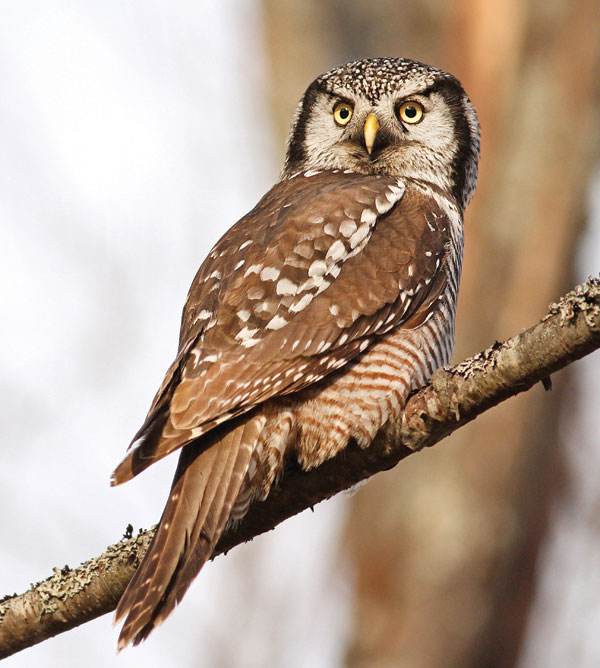
Photo courtesy Luke Seitz/lukeseitzart.com.
To better understand the possibilities of urban birding, I drop in on Dominik Mosur, a 35-year-old Polish emigré who works as an animal care attendant at San Francisco’s Randall Museum and as a volunteer for the Golden Gate Audubon Society. In 2011, Mosur set a single-year record (what birders call a “big year”) by spotting 273 species in the county of San Francisco, everything from an American avocet to a common yellowthroat. He invites me to join a monthly bird walk that starts at the museum and meanders through the surrounding parkland.
We meet at the entrance at 8 a.m., a dozen early-risers led by Mosur and his Audubon colleague Brian Fitch. It is a crystal-clear autumn morning, but it also happens to be one in which Bay Area birds would share the sky with space shuttle Endeavour. (It is scheduled to fly, piggyback on a 747, over the Golden Gate Bridge and around the city on its final journey before heading to the California Science Center in Los Angeles.)
We spend the first 15 minutes sweeping the nearby trees and telephone lines, spotting an American goldfinch, a pair of pine siskins, and a young red-shouldered hawk, among others. But the action doesn’t really take wing until we arrive at a large patch of poison oak that occupies a spot near the top of Corona Hill. A Lincoln’s sparrow perches on a branch, and then someone spots a savannah sparrow. Mosur, excited, stage whispers, “It’s picking up.” A warbling vireo lands in a bush near a golden-crowned sparrow. “That’s a pretty good sparrow flock right there, even if it’s only three birds,” Mosur says, noting that each of the sparrows is the first of fall for Corona Hill. “Good variety!”
At that point, more and more people armed with binoculars and long-lens cameras start trudging up the hill. These late arrivals are what birders might call accidentals or strays. They are here to see the Endeavour.
The birders, unflappable, stay focused on their LBJs—little brown jobs. While most of the day’s visitors to Corona Hill will view but one flying object, our little group of birders tally 46 avian species and the Endeavour.
The walk unequivocally demonstrates one other facet of birding, which I call connoisseurship—not in the sense of ever-more rarefied taste, but in the sense of a densely layered appreciation for nuance and subtlety. Wine enthusiasts like to ponder the importance of terroir and to argue over whether the 2005 Bordeaux will be the match of the 1982s. Long-time baseball fans can expound on the details of the infield fly rule and debate which left-handed pitcher has the best move to first base. Avid birders, as I had seen, have the expertise and enthusiasm to differentiate between the Lincoln’s sparrow and the savannah sparrow and to get excited about it. They can deftly juggle the differences between the immature and adult plumage of hundreds of species or passionately discourse on the benefits of roof prism binoculars over Porro prism pairs; they can look at a bay full of rafting ducks, as Buechert did when 12 years old, and notice the one tufted duck among the thousands of locals, even though they have never seen one outside of a book before. Connoisseurship, I think, is a field mark of passion.
Become a Saturday Evening Post member and enjoy unlimited access. Subscribe now
